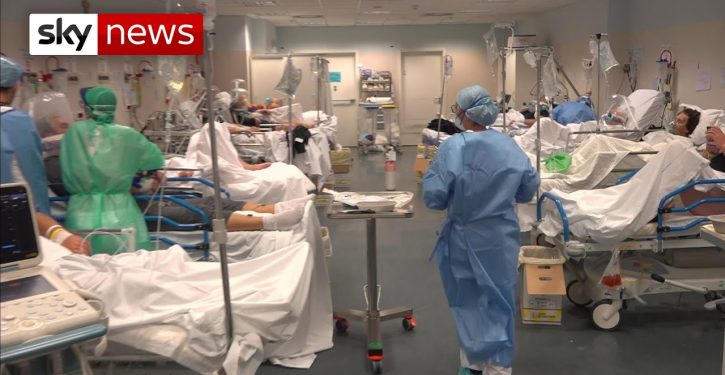
In a major medical advance, a 3D-printed organ has been transplanted into a patient. A Korean patient is now breathing through her new windpipe, which is partly made from another person’s stem cells. The ability to make 3D-printed organs could help ameliorate the current shortage of organs for transplantation:
A team of scientists, doctors and engineers became the first people to perform a 3D-printed windpipe transplant at Seoul St Mary’s Hospital in 2023. The patient is a female in her 50s who lost part of her windpipe (also known as a trachea) after having surgery to remove thyroid cancer.
3D-printed bones and foods are just some of the future technology that have already seen some success – but organs are new territory.
Fundamentally, the patient’s new organ is built with cartilage and mucosal lining (the moist lining that you get in some of your organs and body cavities like your lungs and nose).
The scientists obtained nasal stem cells and cartilage cells from other patients to create these elements – cells which were discarded during a procedure to treat nasal congestion and from a nasal septum surgery.
But the 3D-printed windpipe also contains polycaprolactone (PCL) for structural support, as well as bio-ink. Rather than the ink you might see in your printer at home, bio-ink carries the living cells needed to create living tissue in 3D-bioprinting.
The PCL has an expiry date, however. Being biodegradable, it is expected to last only five years. However, the scientists hope that during this time, the artificial organ will help the patient’s body regenerate her own trachea.
Existing treatments following trachea removal, the hospital says, cannot restore the original organ – and are also complicated and dangerous. This breakthrough could revolutionise treatment for patients with thyroid cancer, congenital anomalies, or trauma to the windpipe.
One of the procedure’s major breakthroughs is that the patient did not require any immunosuppressants. And, six months after the operation, the windpipe is not only healing well but new blood vessels are starting to form….
A windpipe needs to be patient-specific in its size and dimensions. First, the team collected the patient’s CT and MRI data so they could design it to fit perfectly. In this case, the windpipe had to be less than 5cm (2 inches) long.
It took less than two weeks to print and was transplanted into the patient in a half-day surgery…T&R Biofab designed the printer to specialise in printing hollow tubular structures, with high-precision technology to enable scientists to create such a personalised organ.
Organs from genetically-modified pigs may also be used to keep people alive.
Artificial wombs could be coming soon, to prevent premature babies from dying or being permanently disabled due to premature life outside the womb. Doctors are already beginning to do womb transplants. A woman who was previously unable to have children recently received her sister’s womb in the first womb transplant in the United Kingdom.
Another way to make more organ transplants available would be to pay people to donate a kidney, or to give people incentives to become organ donors upon their death (such as reducing people’s driver’s license fee, in exchange for them listing themselves as future organ donors on their driver’s licenses). Lifting the ban on organ sales could save as many as 30,000 lives annually.
George Mason University law professor Ilya Somin points to a study in the Journal of the American Society of Nephrology, titled “The Terrible Toll of the Kidney Shortage.” It noted that the “106,000” people “who do not receive a transplant” due to the current kidney shortage “are fated to live an average of 5 years on dialysis therapy before dying prematurely.”
Somin and others say the ban on organ sales should be repealed to save lives. Back in 2011, kidney donor Alexander Berger explained why kidney sales should be legal in The New York Times. Berger was a researcher for GiveWell, a nonprofit that helps charitable donors decide where to give. Berger predicted that allowing kidney donors to be compensated would save countless lives by giving people an incentive to donate their kidneys, resulting in a vast increase in kidney donations.
Right now, people have to be unusually selfless to donate a kidney, since you have to spend several days in the hospital to donate one, take off a lot of time from work, and run a tiny risk of death. Few people are that selfless. The poor suffer as a result: as Berger notes, people unable to get kidney transplants now are “disproportionately African-American and poor.”
If kidney sales were legal, the taxpayers would save money, too. The government would be able to simply pay for kidney transplants for poor and elderly people who need them (including the cost of buying the kidney needed for the transplant), rather than paying for years and years of costly dialysis treatment through Medicare and Medicaid. The purchase price of a kidney would be much less than the ongoing cost of dialysis.
As Berger noted, if the government paid for kidneys, that would actually “save the government money; taxpayers already foot the bill for dialysis for many patients through Medicare, and research has shown that transplants save more than $100,000 per patient, relative to dialysis.” (By legalizing organ sales, one nation was able to eliminate waiting lists for transplants, and avoid the staggering costs of widespread dialysis.)
As Berger observed, people who receive compensation for their kidneys will not be “exploited.” While there is some risk associated with donating a kidney—the whole reason compensation is needed—“the risk of death during surgery is about 1 in 3,000,” smaller than many risks that everyone is already allowed to take in exchange for money or just for the heck of it. Moreover, a kidney donor’s “remaining kidney will grow to take up the slack of the one that has been removed.” So donating a kidney does not interfere with leading a normal life.
Professor Somin says the exploitation argument against organ sales is logically inconsistent. Most of the people who “oppose legalizing organ markets because they believe it would lead to exploitation” have “no objection to letting poor people perform much more dangerous work, such as becoming lumberjacks or NFL players.” The risk of dying during kidney donation (0.03 percent) is no higher than the risk of going sky diving twice or driving 20,000 miles (which is some people’s annual commute to work).
Moreover, as Somin notes,
In addition to offering payment to living donors, we can pay potential donors in advance for the ‘option’ of harvesting organs after they pass away, a strategy that eliminates any negative health effects on donors, since, by definition, the option can only be exercised after they have died, and have no further use for the organ themselves.



